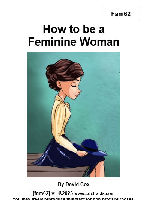Darby translation 1890 [Darby]
Summary
The Darby Bible (DBY, formal title The Holy Scriptures: A New Translation from the Original Languages by J. N. Darby) refers to the Bible as translated from Hebrew and Greek by John Nelson Darby. Darby published a translation of the New Testament in 1867, with revised editions in 1872 and 1884. After his death, some of his students produced an Old Testament translation based on Darby’s French and German translations (see below). The complete Darby Bible, including Darby’s 3rd edition New Testament and his students’ Old Testament, was first published in 1890.
J. N. Darby’s purpose was, as he states in the preface to his English NT, to make a modern translation for the unlearned who have neither access to manuscript texts nor training and knowledge of ancient languages of the Scriptures. He was the principal scholar for a number of translations – and not the sole translator of any one of the various translations that bear his name. He worked with various brethren who had academic and spiritual qualifications. He also acknowledges dependence on the critical work of Samuel Prideaux Tregelles and various other scholars. Darby’s translation work was not intended to be read aloud. His work was for study and private use. In his own oral ministry he generally used the English KJV.
When Mr. Darby first issued his New Translation into English he wrote in the preface to the Revelation ‘if the reader find my translation exceedingly similar to Mr. William Kelly’s, I can only rejoice in it, as mine was made a year or two before his came out, and he has never seen mine up to the time of my writing this . . .’ (Darby went on to write that his New Testament translation had been lying by him for some years then). In his introduction to the 1890, German version, he wrote, “In the issue of this translation, the purpose is not to offer to the man of letters a learned work, but rather to provide the simple and unlearned reader with as exact a translation as possible.”
In the Old Testament Darby translates the covenant name of God as “Jehovah” instead of rendering it “LORD” or “GOD” (in all capital letters) as most English translations do. Among other widely-used translations only Robert Young’s Literal Translation, theAmerican Standard Version (1901), and the Jehovah’s Witnesses’ New World Translation (1950) have followed this practice (the latter introducing the Name in their New Testament over 200 times, though not occurring in the extant koine Greek text). However, even the footnotes of many editions (such as the 1961 Modified Notes Edition) of Darby Bible’s New Testament indicate where “Lord” (“Kurios” in Greek) in the scripture text probably refers to Jehovah. The 1961 Modified Notes Edition of the Darby Bible includes the 1871 New Testament Preface, which says in part “All the instances in which the article is wanting before Kurios are not marked by brackets; but I give here all the passages in which Kurios, which the LXX employ for Jehovah, thence transferred to the New Testament, is used as a proper name; that is, has the sense of ‘Jehovah.'” It then gives a listing of those places. from wikipedia.org
Download
Download: Darby translation 1890 [Darby]

Buy me Burrito! Burritos are delicious. Meat, beans, sour cream, veggies, wrapped in a tortilla. We all enjoy burritos! But you know that you cannot have what is good without somebody paying for it. If you have enjoyed things on my website, please consider helping me maintain the expenses of this site. Consider at least a one time donation to this ministry of $10 or $20 dollars? Very infrequently (one person every 3-6 months) will somebody donate something. Usually that is all I receive from 34 websites! Yet, from my download statistics, I have about 96 gigabytes total being downloaded monthly from all of these websites. Be a blessing to me and donate any amount. It would be really great if you could gift me and my wife (who splits a burrito?) this money so that we could enjoy eating out at least once in a while. (I pay the expenses for these sites out of our living expenses.) God will richly bless you and repay you for your generosity. 1 Timothy 5:18 For the scripture saith, Thou shalt not muzzle the ox that treadeth out the corn. And, The labourer is worthy of his reward. If you received some value from my websites, consider at least a small donation. A big donation would really be nice, too, though.
Donate to David Cox Ministries.

fam62 How to be a Feminine Woman examines femininity from a Bible perspective. It compares homosexuals being feminine. Topics: God created us, man, and woman. | The Spiritual Fight is within us ourselves. | A Device of Satan A Device of Satan | The Homosexual and Trans Angle | Highlighting the Woman, How She Behaves | The Crux of the Matter | To Be a Feminine Woman, She must attend to her adorning. | The Description of a Woman.
Excerpt from the Tract: 1 Corinthians 6:9 Know ye not that the unrighteous shall not inherit the kingdom of God? Be not deceived: neither… nor adulterers, nor effeminate… In other words, these people were doing the opposite of what God commanded them to do. Being men and having the command to act manly (1 Corinthians 16:13 Watch ye, stand fast in the faith, quit you like men, be strong), they acted like women. For women, it is the command of God that they act feminine, to be womanly. To seem feminine, these perverts usually use a dress or skirt, and they never use pants, because they know that by using pants they identify themselves being masculine, and using skirts and dress with being feminine. But it seems like an impossible thing to fathom, but even homosexuals know exactly how to identify as a woman, men being feminine, in their rebellion, and Christian women can neither define what it is that God commands them to be, how to dress themselves as women, neither how to act feminine.
How do you distinguish between a man and a woman? Pants in a man, and dress or skirt in a woman. Even common bathroom signs show this obvious point. The question is not how a woman dress should, but why don’t women, especially Christian women, dress like a woman should. It is not a matter of clarity, but a matter of no desire on the part of certain women. Are you a feminine woman? If not, why not?
Read the Tract: fam62 How to be a Feminine Woman
MySwordmodules is a website dedicate to the MySword Bible Program for Androird devices. We host MySword Modules.

I am Pastor David Cox, the Webmaster of this site. I am an independent Baptist Missionary pastor working in Mexico City since 1984. Many churches reject a fundamentalist because we do not accept the many false doctrines that modern churches have in common. We believe the Bible, and we preach and teach it. I have written over 400+ tracts and more than 60+ books which are just an extension of my pulpit ministry. All are free. Please help us keep this good material on the Internet for the world.
If you like what you see on this website, please help us with even a small donation. These sites cost me about $10 per month per site. Please donate something to help with this burden.
----->>>
Note: I am a local church missionary, and you can find my home church here (davidcoxmex.com) where you can write a check to our ministry and receive a tax-deductible receipt at the end of the year.
